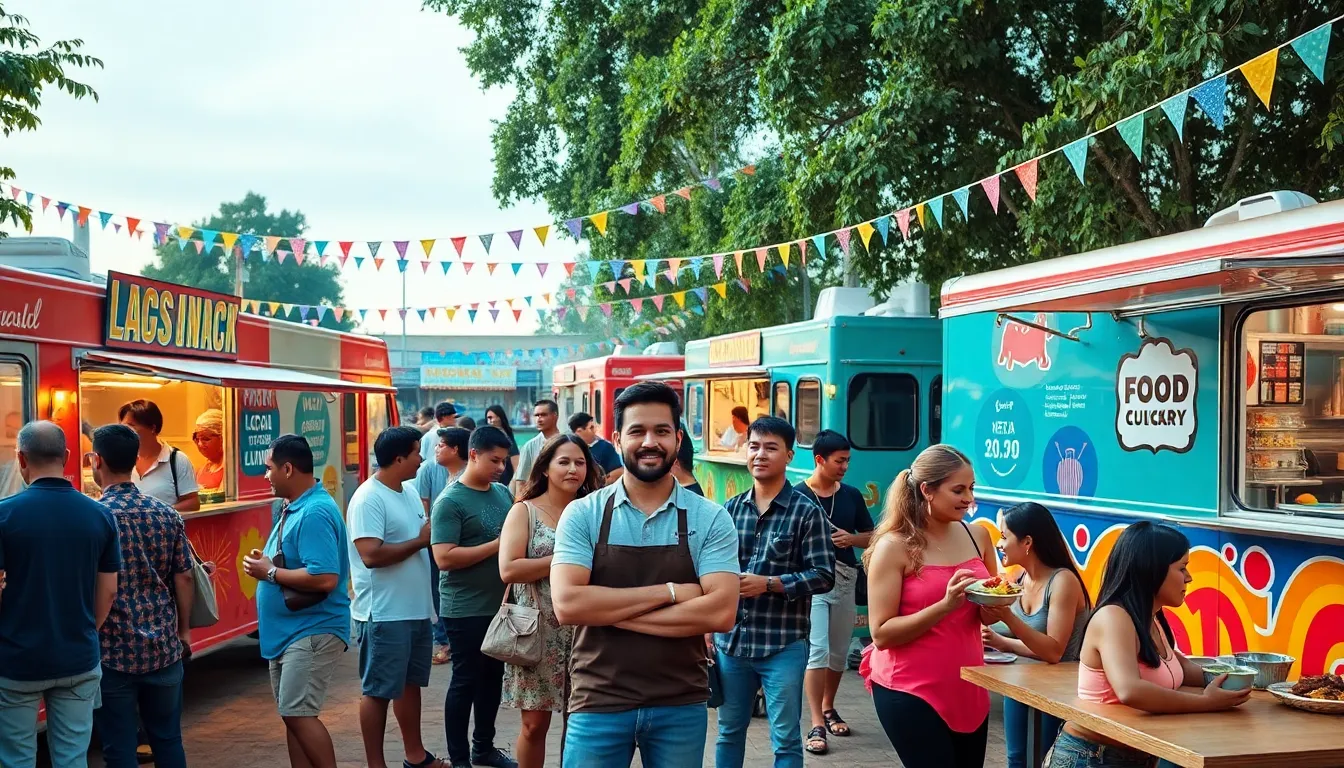Table of Contents
ToggleIn the bustling world of food trucks, standing out is no easy feat. Picture this: a million-dollar idea squished into a compact kitchen on wheels, all while navigating the ever-changing tastes of consumers. But fear not. You don’t need to be a culinary wizard to foist your food truck into the spotlight. Instead, you can ride the wave of consumer trends that are steering this mobile food revolution. From health-conscious choices to the power of social media, this article will serve up what makes a food truck not just successful but a must-try destination.
Understanding the Evolving Food Landscape

The food landscape is more dynamic than ever, constantly transformed by consumer habits, technology, and cultural shifts. In today’s bustling environment, food trucks aren’t merely serving hot dogs and tacos. Instead, they are morphing into epicenters of culinary experimentation and innovation. To tap into this changing market, entrepreneurs must keep their fingers on the pulse of consumer demands.
Further, today’s consumers are more discerning. They aren’t just looking for a quick meal: they crave authenticity and story behind their food. Knowing how to position a food truck within this context not only sharpens the business strategy but also builds a loyal customer base eager for the next culinary adventure on wheels.
Staying informed about these evolving consumer expectations becomes pivotal. Smart food truck owners adapt their menus and marketing strategies accordingly, ensuring they’re not just following trends but anticipating them.
The Rise of Health-Conscious Choices
With health becoming a priority for many, food trucks have a unique opportunity to capitalize on this trend. Gone are the days when street food meant greasy options with no regard for nutrition. Now, individuals seek out meals that support their health and fitness goals even when indulging on the go.
Incorporating fresh ingredients and transparent sourcing plays a vital role. Customers appreciate knowing where their food comes from, ensuring it fits into their health-conscious lifestyle. It’s all about balance, offering guilt-free indulgence in tempting forms. For example, a food truck might serve salads with a twist, featuring vibrant, locally sourced toppings that tempt not only health nuts but also those who simply enjoy delicious food.
At the same time, menu items rich in plant-based options have seen a surge. Food trucks that feature vegan and vegetarian meals are often met with enthusiasm. So, for those looking to attract health-conscious consumers, a diverse menu that embraces healthy options can be a game-changer.
Embracing Local and Sustainable Sourcing
In this age of increased environmental awareness, consumers frequently seek food that aligns with their values. Sourcing ingredients from local farms not only enhances flavor: it cultivates a sense of community. Food truck owners who embrace local partnerships often see an increase in customer loyalty, as patrons feel good about supporting local businesses.
Sustainable sourcing also resonates with younger consumers. They prioritize eco-friendly practices and often choose food trucks that reflect this ethos. This means incorporating organic produce and sustainable proteins into the menu. Not only does this appeal to the environmentally conscious, but it also strengthens the food truck’s brand identity.
When marketing, food trucks should highlight their use of local ingredients. Emphasizing this connection between the food, the farmers, and the community can engage customers and foster lasting relationships.
Adapting to Dietary Preferences and Restrictions
Food is deeply personal. Add in dietary restrictions, and what may seem straightforward becomes a complex puzzle. Food trucks that understand and cater to common dietary preferences, such as gluten-free, keto, or allergen-free options, position themselves favorably within the competitive landscape.
Offering easily customizable meals allows patrons to tweak their orders based on their dietary needs. This flexibility enhances the customer experience and fosters inclusivity, making people feel welcomed regardless of their dietary background.
Also, the use of clearly labeled menus ensures transparency, building trust with health-conscious consumers who want to know what’s in their food. This kind of approach can be the difference between gaining a loyal customer or losing them to the next food truck.
Utilizing Social Media and Digital Marketing
In a world dominated by social media, food trucks have a golden opportunity to create a buzz and scale their presence. Platforms like Instagram and TikTok allow food truck owners to showcase their mouthwatering offerings and behind-the-scenes prep in ways that entice and engage. The visual nature of these platforms excels in highlighting the vibrant aesthetics of food. But it’s not just about breathtaking food photography: storytelling matters too.
Sharing the journey, the quirks, and the people behind the food truck resonate with consumers on a personal level. This connection often transforms first-time customers into repeat patrons.
Using targeted ads and engaging posts helps food trucks gain visibility and attract specific demographic groups. Also, leveraging user-generated content, encouraging patrons to post photos and share their experiences, helps build a community around the brand. In modern digital era, organic reach combined with strategic marketing can turn a local food truck into a sensation.
Creating Unique and Engaging Experiences
Success in the food truck game often comes down to the overall experience offered. Beyond serving food, creating an engaging atmosphere can be a game-changer. Unique concepts, like themed cuisine or food truck festivals, can significantly enhance a customer’s dining experience.
Adding elements like live music or collaborations with local artists not only entertains but also transforms routine meals into memorable occasions. By doing this, food trucks become more than a stop for lunch: they evolve into destinations where community members gather and connect.
Making customers feel included in this shared experience can lead to increased word-of-mouth promotion and social media buzz. In fact, many food trucks now host events and collaborate with local businesses to create a community-driven vibe, reflecting their commitment to the locality beyond just serving food.




